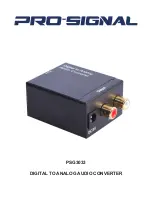
WAVECOM Decoder W74PC, W-PCI/e, W-CODE, W-CLOUD Manual V9.1.0Fundamentals
of
Radio
Data
Transmission
115
sure proper operation of the mechanical devices the stop bit was extended to have 1.5 times the length of
a data bit, which accounts for the term "non-integral" earlier in this section.
In
synchronous
systems there is continuous synchronization between the sending and receiving devices
either by special non-printing control characters being inserted into the messages at regular intervals, or
the code words themselves being constructed to facilitate synchronism. To maintain synchronism, special
idle or sync characters are transmitted when no traffic is transmitted. In contrast to start-stop systems,
only elements having a duration of an integer multiple of the duration of the minimum signal element are
used –
isochronous
sequence.
For burst mode or packet transmissions a leading preamble of either a sequence of alternating zeros and
ones and a repeated fixed pattern – in satellite transmission called a
Unique Word
- is often used for
synchronization purposes. A very common way of combined synchronization and packet delimiting is to
pre-cede and terminate the data packet with so called
flags
, i.e., unique bit patterns, not being a part of
the data proper. Flags are characteristics of HDLC (High-level Data Link Control), which is used in amateur
radio packet communication and in AIS.
Multiplexing and Multiple Access
Another method is to transmit more than one channel on a radio link. This may be achieved either in the
frequency or time domain, or a combination of the two. When the aggregation of channels is done before
the modulation process, it is known as multiplexing. When several independent stations access a medium,
is the term “multiple access” is applied. A well known example of multiple access is Ethernet LANs where
all nodes have access to the same medium.
With
frequency division multiplexing (FDM)
or
frequency division multiple access (FDMA)
a carri-
er frequency is modulated with a number of sub-carriers. Each sub-carrier carries a data signal. The sub-
carriers may be amplitude, frequency or phase modulated. The more common is narrow shift frequency
modulation. Each channel is independent of the otherones, and may transmit with a different speed or use
a different alphabet or system. One such system used in HF communications is the CODAN 16 carrier
QPSK system.
With
time division multiplexing (TDM)
or
time division multiple access (TDMA)
each data source is
allowed access to the
aggregate channel
(line or radio link) in well-defined time slots. To keep pace with
the incoming bit stream, the aggregate channel speed must be the sum of the speed of the individual
channels. All channels must have identical speeds. However, a channel subdivision scheme has been
standardized so that up to four sub-channels may share one channel. An example is the ARQ-M2 and M4
modes.
In satellite systems a combination of FDMA and TDMA is often used to optimize channel usage. DAMA
(Demand Assigned Multiple Access) satellite systems are an example of this type of multiple access.
Polarization division multiplexing is used in satellite communications, whereby differently polarized signals
use the same frequency leading to frequency reuse. Inmarsat earth station – satellite links in C-band use
this type of multiplexing.
The overwhelming majority of radio data systems will transmit the individual bits of a codeword one after
the other in
serial transmission
. However real-time or high volume data systems, like digitized secure
voice, computer network access and image or file transfer often uses
parallel transmission
. The serial
code words are fed to a serial-to-parallel converter and then to the sub-carrier modulators of a FDM.
Modulation
Modulation is the process whereby the digital baseband signal or waveform is superimposed onto a carrier.
The carrier may be manipulated in amplitude, frequency and phase.
The most frequently used modulation techniques are 2FSK using two frequencies, MFSK with four or more
tones, and differential phase modulation methods such as 2DPSK, 4DPSK, 8DPSK or 16DPSK. On satellite
links phase modulation methods such as BPSK or QPSK are used. Other modulation types include AM, FM
or phase sub-carrier modulation of an FM, AM or phase shift main carrier.
Modulation methods which directly manipulate the carrier may be decoded using the receiver IF output, or
for smaller shifts in the case of FSK, also the AF output. In addition many VHF/UHF receivers also have a
direct discriminator output which may be used.
In contrast, modulation methods using sub-carrier modulation must be decoded using the receiver AF out-
put. Decoding indirect modes can only take place using the receiver AF output. The receiver serves as a
















































